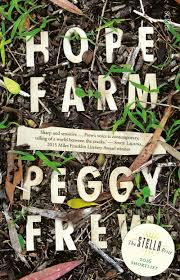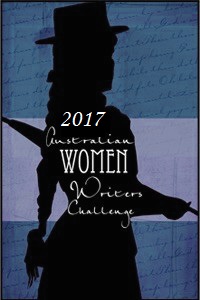
Hope Farm explores the mother-daughter relationship between Ishtar and Silver in the unique setting of life spent on the fringes in Australian ashrams and communes. Thirteen-year-old Silver and her mother, Ishtar, live in a Brisbane ashram. Ishtar, prone to fits of boredom with the drudgery of everyday life and dead end partners, gives in to the thrill of having a new lover, Miller, and a new life at Hope Farm, a commune in Gippsland Victoria.
Hope Farm isn’t the vibrant, self-sustaining, wondrous life on the land that Miller promised. Instead Ishtar finds herself broke after buying Miller a car and funding the trip to Hope Farm. Silver finds herself surrounded by a group of bitter and apathetic adult hippies who aren’t living by the values they preach. She is unimpressed by her new surroundings:
‘…Hope was far and away the most uncomfortable, ugliest, and most depressing place we’d ever lived, with the most flaccid, uninspiring residents…’
Ishtar is caught up in her own search for personal happiness. Silver, left to her own devices in a life with no boundaries, resorts to attempting to look after herself. Beautiful and sensual, Ishtar is accustomed to being the centre of men’s attention. Conflict and jealousy simmers among several of the women at the commune over Miller and Ishtar, and the sexual tension they create. Dan, a young new arrival to the commune, draws Ishtar’s attentions, further fanning the fires of tension. The arrival of Miller’s wife has explosive consequences.
Silver desperately searches for a sense of normality among the liberated attitudes and actions of the hippies. She befriends Ian, a boy who lives on a nearby farm. Ian is awkward, introverted and savagely bullied at school. He channels his energies into photography and planning revenge on his bullies. Ian and Silver form a friendship that’s strictly out of school only, and they roam the nearby countryside together after school and on weekends. As Silver struggles with life at Hope Farm, she also wrestles with the emotional turmoil of being thirteen, of her body changing, and her affections for Dan. All Silver really wants is to have a home shared with just her mother, to be a family of just the two of them. And maybe Dan. Her yearning for this one thing is tangible and heartbreaking.
We gain glimpses into Ishtar’s earlier life, how she first came to be at an Ashram in Brisbane, through flashbacks that are alternated throughout the current day story. This device adds depth to Ishtar’s character and allows us to see many of the motivations behind her actions.
Peggy Frew’s novel turns a sharp eye onto a young girl cast adrift and left to wrestle alone with becoming a woman in a world over which she has no control. An absorbing read, this beautifully written book conveys the ache and longing experienced by both mother and daughter, whilst simultaneously exploring the impact of an unconventional childhood and the devastating repercussions a parent’s actions can have on their child.
Rating: 4/5

List of Awards
2017 International Dublin Literary Award – Longlisted
2016 Barbara Jefferis Award – Winner
2016 Miles Franklin Award – Shortlisted
2016 Stella Prize – Shortlisted
2016 Indie Book Awards – Shortlisted
Hope Farm by Peggy Frew (Scribe Publications 2015), ISBN (e-book) 9781925113778

